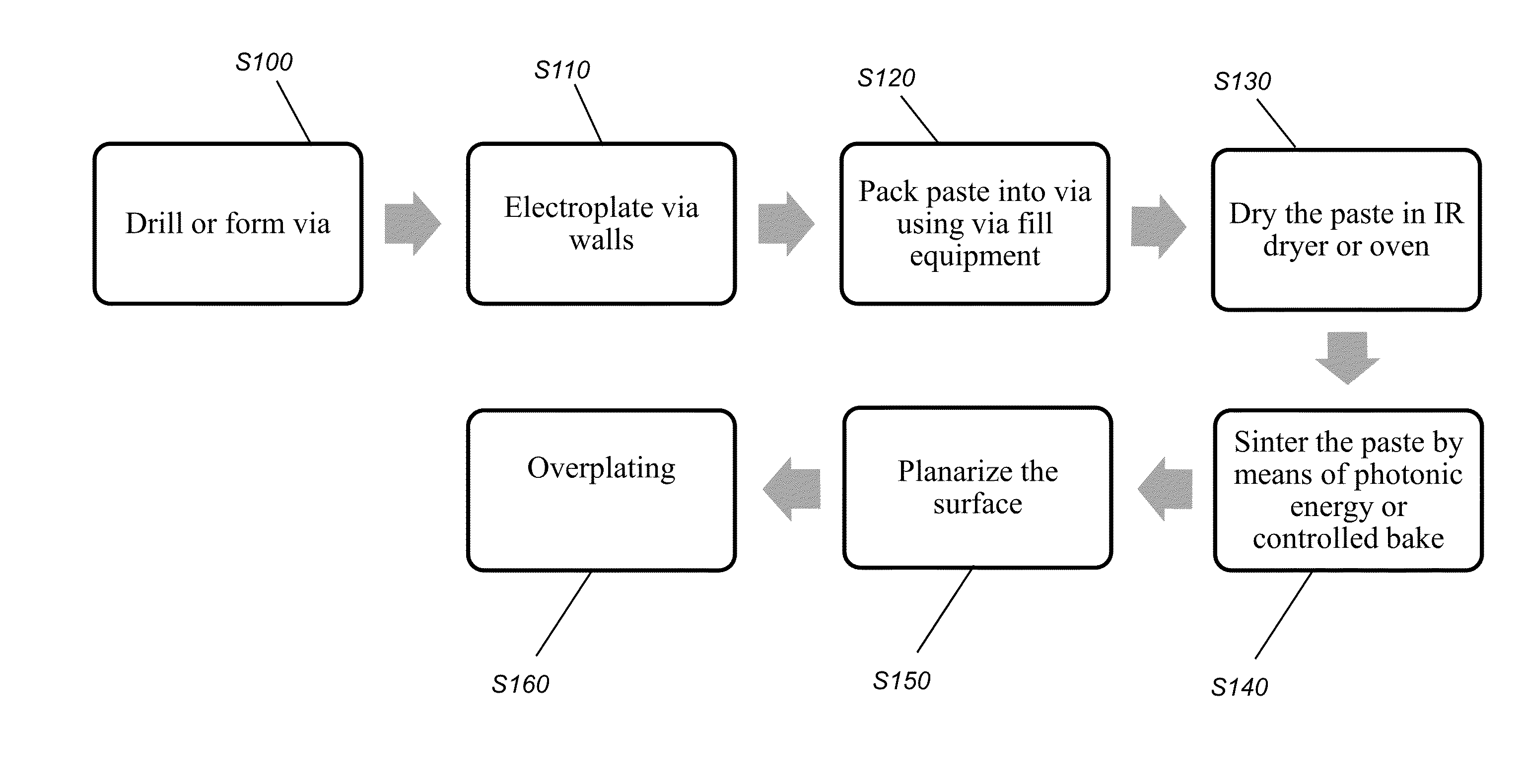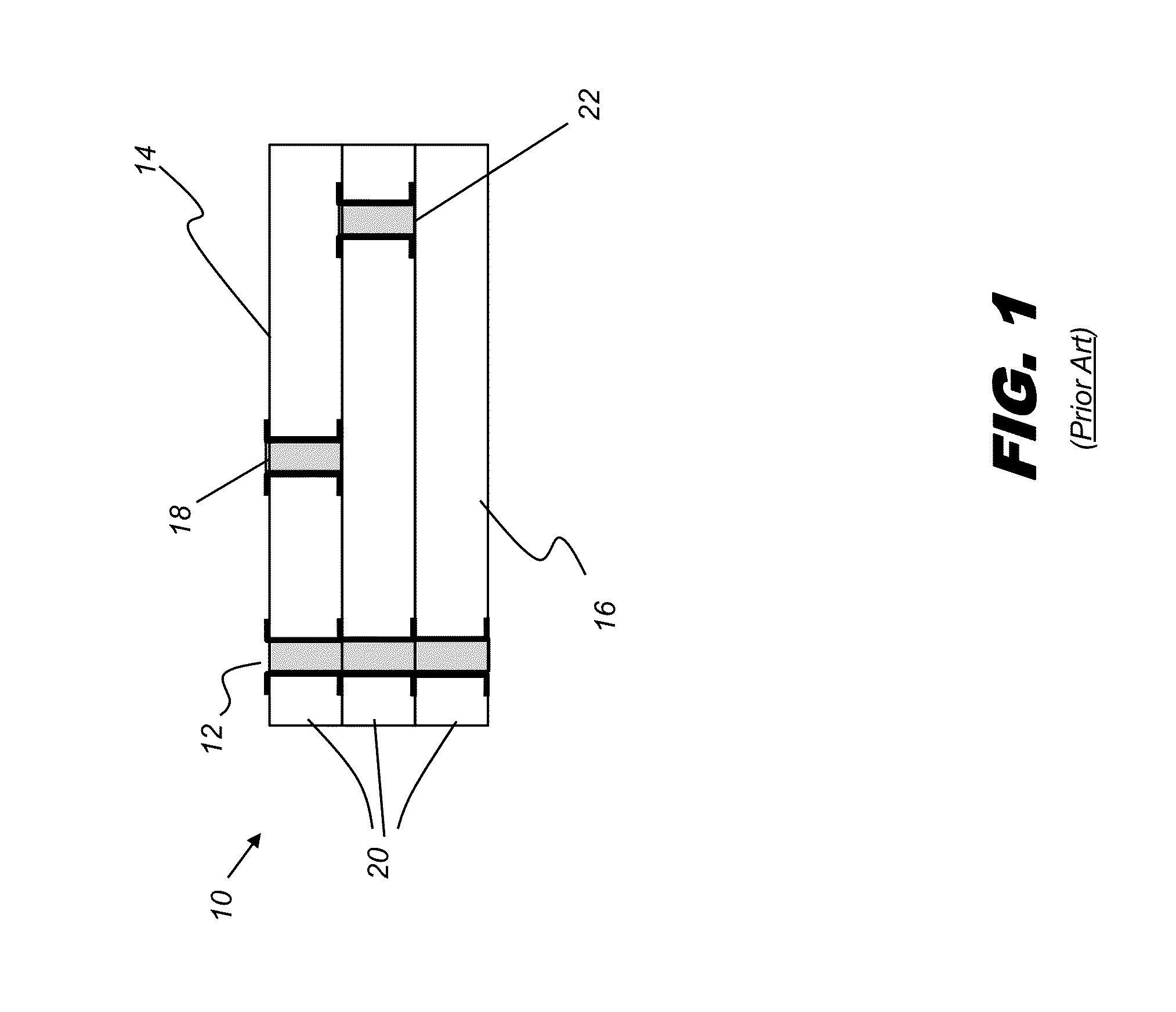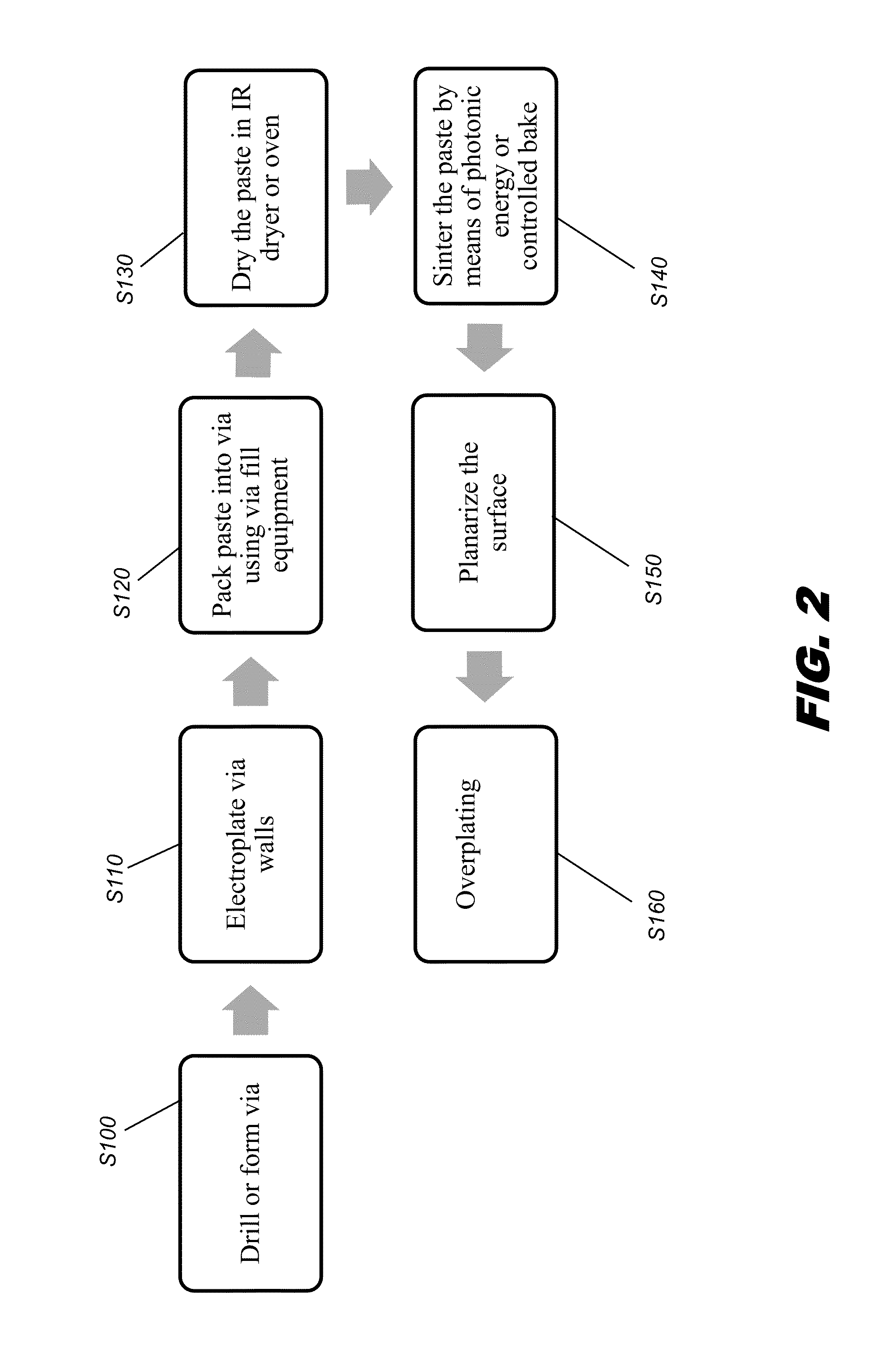Method for forming vias on printed circuit boards
a technology of printed circuit boards and vias, which is applied in the direction of printed circuit manufacturing, printed circuit aspects, printed element electric connection formation, etc., can solve the problems of difficult placement of electrical components, time and complexity, and disadvantages of leaving via holes without some type of filling, and achieve high conductivity.
- Summary
- Abstract
- Description
- Claims
- Application Information
AI Technical Summary
Benefits of technology
Problems solved by technology
Method used
Image
Examples
example
[0090]According to an embodiment of the present disclosure, PCBs having a number of vias were prepared and processed using the methods described hereinabove.
[0091]The via fill material was a paste having copper nanoparticle and micron-sized particulate in the ratio of 1:1, with copper loading of 70% nominal by weight, in a solvent that includes A-Terpineol, approximately 25% by weight, with polyvinyl butyral as an organic binder.
[0092]The vias on the PCB were filled using a squeegee blade and dried in a vacuum oven at a nominal temperature of about 50 degrees C. for one hour. The PCB was then sintered in an oven at temperatures ranging from about 190 to 225 degrees C. for one hour under a reducing environment. The filled vias were then planarized, and overplated with copper using non-electroless plating.
[0093]An IPC solder float test was performed on finished over-plated vias. The float test was executed over 5 cycles, with 10 seconds at 550 degrees F., allowed to cool to ambient be...
PUM
| Property | Measurement | Unit |
|---|---|---|
| Fraction | aaaaa | aaaaa |
| Fraction | aaaaa | aaaaa |
| Fraction | aaaaa | aaaaa |
Abstract
Description
Claims
Application Information
 Login to View More
Login to View More - R&D
- Intellectual Property
- Life Sciences
- Materials
- Tech Scout
- Unparalleled Data Quality
- Higher Quality Content
- 60% Fewer Hallucinations
Browse by: Latest US Patents, China's latest patents, Technical Efficacy Thesaurus, Application Domain, Technology Topic, Popular Technical Reports.
© 2025 PatSnap. All rights reserved.Legal|Privacy policy|Modern Slavery Act Transparency Statement|Sitemap|About US| Contact US: help@patsnap.com



